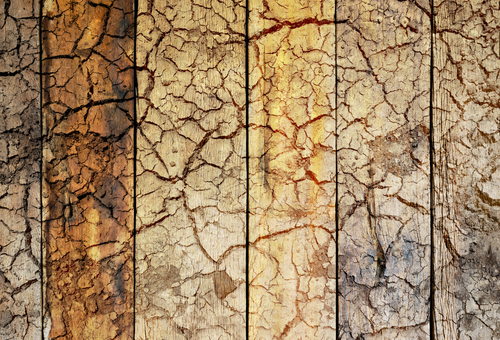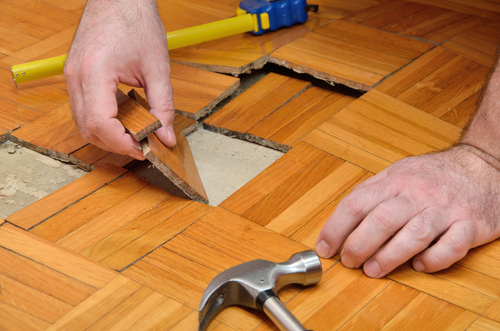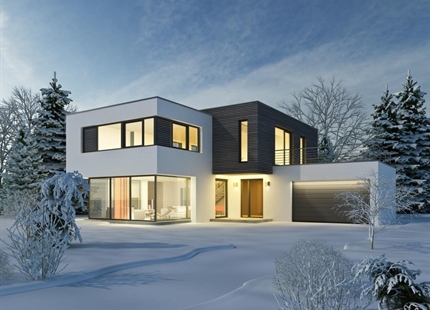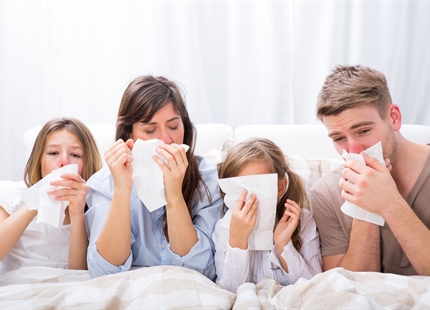18.11.2016
Too dry, too warm: heating can warp your floorboards
The verdict: residents are responsible for their indoor environment – and for any damage
If you install parquet flooring in your living space over the summer, you might get a nasty surprise when winter arrives and the wood deforms, rising or sinking along the middle of the floorboard. Experts say that warping can occur in rooms constantly heated to 25°C or more with low relative humidity of less than 40 per cent. But the installer of the flooring is not to blame: according to Saarbrücken district court, residents are duty-bound to tell experts about their heating behaviour, which is considered an exceptional circumstance*.
Wood is a living thing, and is valued not least for its positive influence on the indoor environment. A close look at the raw material reveals its hygroscopic ability to draw moisture from the air and return it as required: tiny gaps appear when moisture is released and close again as room humidity increases and the wood expands. If, however, the temperature and dryness consistently exceed a particular level, the parquet flooring will be damaged beyond repair. This usually occurs during the cold season because relative humidity is much lower when the heating is on than in the other months.
In its verdict, Saarbrücken district court also declared this to be an underlying issue. The combination of excessive heating and dry indoor air led to the permanent deformation of the flooring. Although the installer waited until the work was finished to provide a maintenance brochure with relevant explanations of room temperatures and humidity, the judge concluded that it was not too late to take appropriate measures such as installing an air-humidifying system. The client was required to pay for the work in full.
Dry indoor air affects people, furniture and much more
In winter, humidity in living and working spaces often falls to dramatically low levels. Relative humidity of 20 per cent is common – far below the ideal level of 40 to 60 per cent.
People fuel humidity in their everyday lives by (for example) showering, cooking and letting in fresh air, all of which produce moisture. In winter, when the heated indoor air could absorb more moisture, there is usually none available. As a consequence, relative humidity constantly drops and the parquet flooring begins to warp as soon as the wood’s hygroscopic tolerance is exhausted. Wooden furniture, antiques and musical instruments risk the same fate, as do paintings and books stored in such conditions.
Additional air-humidifying systems offer effective and safe protection. Although all devices work on the principle of either humidification or atomisation, there are a great many to choose from. But such a wide range of products also has its dark side. Not only are many low-quality devices inefficient and unreliable, in the worst case they may even cause hygiene problems. The best way to find a suitable and permanent solution is to arrange an individual consultation with a specialist like Condair, global leader in humidification.
In fact, balanced humidity protects both expensive possessions and people themselves from harm: poor humidity can be a direct cause of dry skin, a hoarse voice, reddened eyes and dry mucous membranes. It also increases the risk of respiratory tract infections. Many allergies and asthmatic symptoms can also be attributed to a lack of humidity.
In short, the well-being of everything people love and value – from their furniture to their health – depends directly on the moisture in the surrounding air. With that in mind, dismissing humidity’s importance to the indoor environment is even more mystifying. If the owner of the parquet flooring had taken this into account, he could have not only spared himself the damage, but also created a perfect and, above all, healthy indoor environment.*Saarbrücken district court, verdict of 14.12.2010, case no.: 15 O 200/10






